Ask us your question
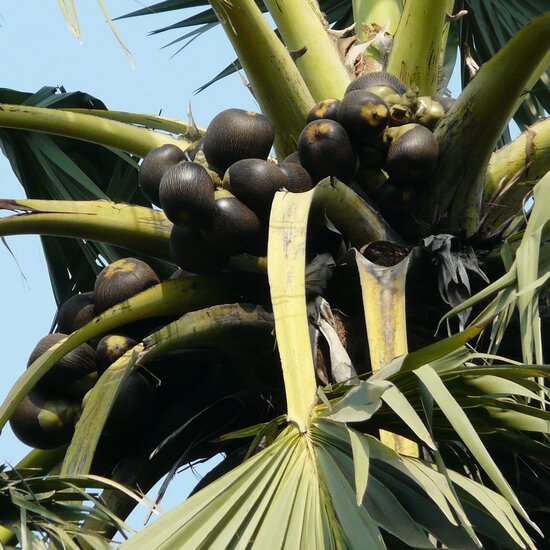
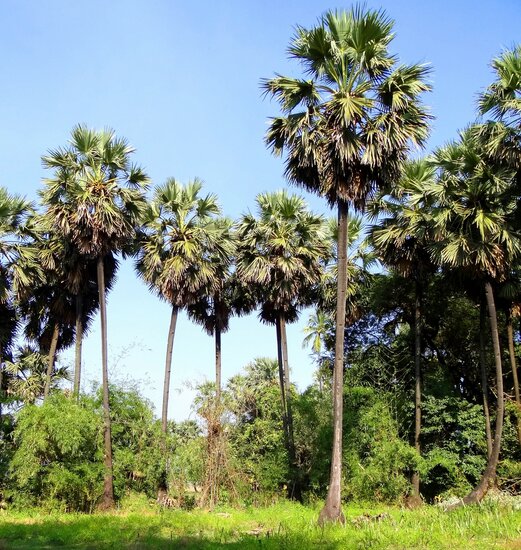
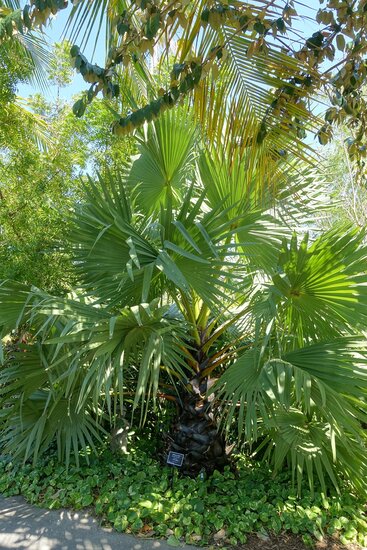
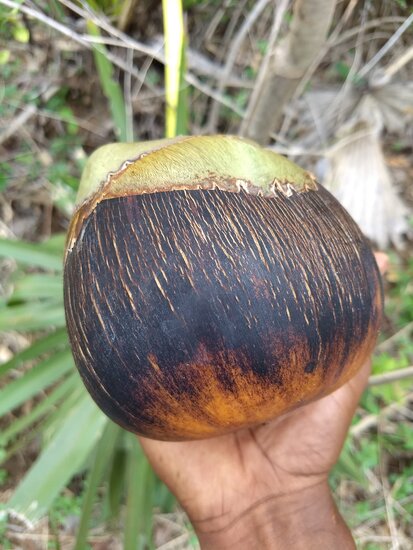
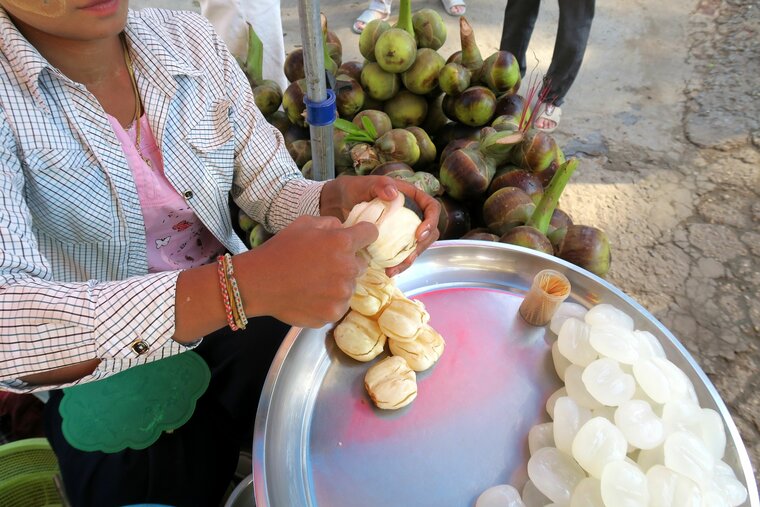





Product description
The fruits of this Asian palm species can weigh up to 2.5 KG and each fruit contains 1 to 3 large, heavy seeds. The pulp is orange-yellow in color and is soaked in water before consumption to get the fibers out. It can then be used as an ingredient in a variety of Asian dishes. The seeds are surrounded by many light-colored fibers and the inside of the seeds contains a sweet, transparent pulp similar to that of a lychee. Both the fruit and the seeds can therefore be eaten. The inflorescence is also harvested in Asia to obtain a sweet-tasting juice. In addition, the leaves and trunk of the palm are used as construction material, so the Palmyra palm has many uses.The species naturally grows near the coast and is used to sandy, dry conditions. The plant grows slowly, quite narrow and tall. In the tropics, it can eventually reach a height of about 30 meters, with the gray trunk consisting of many scar rings from fallen leaves. The palm is either male or female: male flowers are small and female flowers are a lot larger. After pollination, the female flowers can start to develop fruits, however in the tropics this only happens after at least 12 years.
The plant can be kept as a slow growing houseplant. It is important to use a high pot (at least 60cm), because a deep taproot is formed. In addition, provide a sunny spot and a well-drained, sandy soil. Because of the taproot the plant is sensitive to repotting, so try to do that as little as possible and do it very carefully.
Sowing description: First soak the seed in warm water for 24 hours. Then sow in a mixture of sowing mix and sand (1:1) and set aside at 30grC. When germinating, the hypocotyl will first grow downwards before forming roots and a stem. Therefore make sure you use a deep pot for germination. Or let the seed germinate in a transparent bag and transfer it to a deep pot as soon as germination is visible. With the use of a bag it might be easier to keep the temperature at a consistent level. Germination can take a long time, at least 2 to 3 months. After that, it will take some more time before the stem is formed. However, because of the size of the seed and the special germination, it is a nice challenge to try!
Product specification
Do you have a question about this product?
Ask us your question
Product specification
Write a review about this product.
Reviews
View all reviews from our customers below
Uiteindelijk bij alle 3 bestelde zaden na succesvolle spectaculaire kieming en na enige tijd ietwat leven boven de grond niets geworden.
Hoop dat ze weer eens op voorraad komen, proberen we het nog eens.
Net terug van ons jaarlijks verblijf op het eiland Kreta.
Was voornemens vanaf volgende week de 3 diepe potten waar deze 3 zaden in zitten leeg te ruimen als onderdeel van opruiming meerdere niet gekiemde zaden.
Had deze 3 potten uit de oorspronkelijk ruimte gehaald en alvast even op een slaapkamer gezet
Zie net dat bij 1 pot de aarde bovenop flink omhoog geduwd is, alsof er iets in gewroet gehad.
En jawel hoor, alsnog na zo'n lange tijd toch leven naar boven toe.
In een grote bak waar al diverse kweekpotten met oude zaden omgegooid waren komen nu ook ineens minipalmpjes naar boven
Leuke verrassing bij thuiskomst
Als aanvulling op mijn eerdere 2 reviews.
Alle 3 de in okt. '23 bestelde zaden kiemden vrij snel.
Overgeplaatst naar 70 cm diepe potten en deze verbleven in een ruimte met temperatuur tussen 25 en 30 graden.
Luchtvochtigheid werd gegarandeerd met transparante plastic zakken over de potten.
Paar keer per week luchten en water geven.
We zitten nu tweede helft augustus '24.
Helaas nog steeds geen leven bovengronds waargenomen.
Aangezien ik het ook niet meer verwacht heb ik vandaag besloten de diepe potten te gaan gebruiken voor andere gekiemde palmen.
De zaden van de Palmyra palm weggegooid.
Was een leuke en spannende uitdaging
Te proberen waard maar tevergeefs
Als aanvulling op mijn vorige review
De overige twee zaden kiemen ook vrij snel
Ook deze na vorming van flinke kiemwortel geplant in een diepe pot van 70cm
Al met al, alle 3 de in okt. '23 bestelde zaden gekiemd.
We zitten nu eind juni '24.
Zaden voelen nog hard aan (half in de grond)
Verblijven in ruimte met gemiddelde temp van 25 graden.
Met plastic zak erover wordt de luchtvochtigheid gegarandeerd echter tot op heden nog geen tekenen van leven bovengronds.
Gelezen dat dit even kon duren.
Weet alleen niet of zo lang normaal is.
Enfin ze staan toch niet in de weg, laat ze tot eind dit jaar staan.
Dan nog geen bovengronds leven gaan ze weg.
Wordt vervolgd
Half oktober de 3 grote voorbereid op het zaaien.
Daarna in propagator met temperatuur tussen 25 en 30 graden en hoge luchtvochtigheid weggezet.
Eerste zaad heeft al een begin gevormd van de immense grote kiemwortel.
Gezien de verwachte lengte van deze zal dit zaad dit weekend naar een diepe pot overgeplant worden
Hele leuke uitdaging ook deze palm



